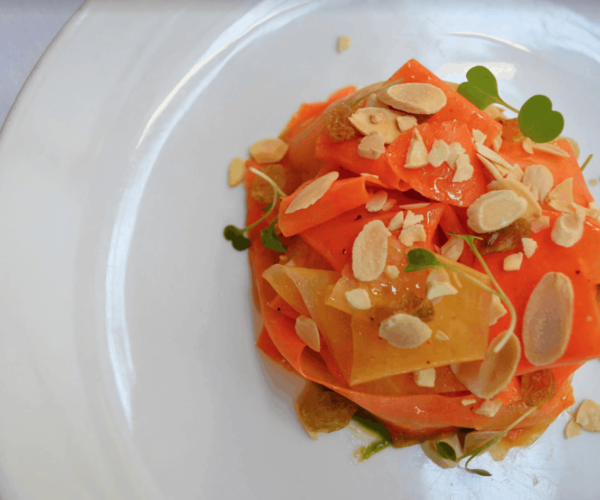Few foods encapsulate the flavor of Italy quite like the pomodoro, or what we call the tomato in English. But as iconic as the tomato is to Italian cuisine, it wasn’t always that way. The tomato came from the Americas, and it was only introduced to Italy in the 15th or 16th century. So what was Italian food like before Italians had tomatoes? At Ferraro Restaurant & Wine Bar, we’re passionate about every aspect of the Italian culinary tradition – so we’re here to turn back the clock and show what Italians ate before the tomato.
Italian Food Without Tomatoes
Before tomatoes, the Italian diet was largely similar to the diet throughout the rest of the Mediterranean. Bread, pasta, olives, and beans were all staples, and Italians also made a variety of different types of polenta. The diet would have varied depending on region, as well: fish featured heavily near the coast, while inland communities would rely more on pork and wild game. Foods would be flavored with things like garlic, onion, and pepper, and olive oil has always held a central role in the region’s cuisine.
So when did the tomato come into play? The exact date isn’t known – some say Christopher Colombus brought it back, while others credit Hernan Cortez for bringing it back in 1521. In any case, the tomatoes first introduced to Italy were wildly different from the ones we know today: they were much smaller, about the size of the modern cherry tomato, and colored yellow. In 1544, the tomato appeared in an herbal guide by Pietro Andrea Mattoli, who called it the Pomo d’oro, or golden apple – which is where we get pomodoro today. In any case, the tomato quickly became a permanent fixture in Italian cuisine, with farmers selectively breeding the plant into the larger, red varietals we know and love today.
Visit Our Las Vegas Restaurant for Italian Fine Dining
While the tomato may not be indigenous to Italy, it’s firmly placed itself at the center of traditional Italian cuisine, and it’s one of the flavors we most know and love from Italy. At Ferraro’s we’re dedicated to capturing the authentic flavors and customs of traditional Italian cuisine, and we’ve created a delicious menu full of dishes that fuse authentic Italian recipes with modern twists. Experience the bold flavors that the Italian culinary tradition has to offer: make a reservation at our Las Vegas Italian restaurant today!




Sorry but if write about history please do it right!
Polenta which is made of Corn aka Maiz came to Europe the same time as the Tomatoe.
So how could they have made various dishes of Polenta prior to the arrival of the Tomatoe????
Hello, you are correct. But your assumption is that we are describing polenta made of corn (Maize). Before the New world brought tomatoes and corn to the region, what would later be called polenta started out as one of the earliest and simplest foods deriving from cereals. Made from wild grains and later from primitive wheat, farro (popular Italian cereals), millet, spelt or chickpeas, the grain was mixed with water to form a paste and was then cooked on a hot stone. In this way, early polenta may have pre-dated leavened bread, since yeasts were often hard to come by and milling techniques were not refined.
Interesting about polenta. Mind-blowing to learn that pomo d’oro did not exist in Italian cuisine before 1530s.